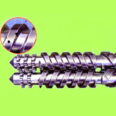Introduction:
In the rapidly evolving field of liquid silicone injection molding, automation equipment has gained significant prominence. Despite its growing popularity, many individuals remain unfamiliar with this advanced machinery and its functionalities. In this article, we will delve into the principles and processes underlying liquid silicone injection molding machines, shedding light on their operation and application.
![]()
Section 1: The Working Principles of Liquid Silicone Injection Molding Machines
Liquid silicone injection molding machines facilitate the production of silicone and rubber products with utmost precision. Let’s explore the step-by-step process involved in these machines:
Plastic Preparation:
To initiate the molding process, granular or powdered plastic is introduced into the silicone rubber molding machine’s barrel. The plastic is then melted through a combination of screw rotation and external barrel heating.
Mold Alignment and Injection:
The liquid silicone injection molding machine advances the mold and injection seat, ensuring proper alignment of the nozzle with the mold gate.
Silicone Injection molding:
Pressure oil is introduced into the injection cylinder, propelling the screw forward. As a result, the molten material is injected into the low-temperature closed mold at high pressure and velocity. This stage involves maintaining pressure for a designated period (known as holding pressure) to facilitate cooling and solidification. The purpose of maintaining pressure is to prevent material backflow, supplement the mold cavity, and ensure optimal density and dimensional accuracy. Silicone molds typically have no specific usage limit, as their lifespan depends on usage frequency and potential damage. By employing appropriate utilization and maintenance practices, the longevity of silicone molds can be significantly increased.
![]()
Section 2: Understanding Liquid Mold Silicone Rubber
Liquid mold silicone rubber is an organic silicone compound primarily utilized for mold fabrication. It is typically available in liquid form and comprises two components: A and B. To utilize liquid mold silicone rubber, both components are mixed in accordance with the prescribed mold-making procedures. The mixture is then vulcanized to form a mold suitable for production.
Section 3: Molded Silicone Molding
Molded silicone molds are created by injecting raw materials into molds. These materials, combined with vulcanizing agents, are subjected to elevated temperatures and pressure within a high-temperature mold. Through this process, the materials solidify into the desired shape. The hardness of molded silicone generally ranges from 30 °C to 70 °C.
Section 4: Silicone Extrusion Molding
Silicone extrusion molding involves the use of a silicone extruder to produce various silicone products, such as tubes, strips, and shaped sheets. Once extruded, these products undergo pre-vulcanization and rapid shaping within a pre high-temperature vulcanization drying channel. Subsequently, the rear drying channel facilitates complete vulcanization, overcoming production and quality limitations associated with traditional silicone rubber extrusion vulcanization processes.
![]()
Conclusion:
Liquid silicone injection molding machines play a pivotal role in the production of silicone and rubber products. By understanding the working principles and processes involved, manufacturers and industry professionals can leverage this advanced technology to achieve superior results. Furthermore, the utilization of liquid mold silicone rubber and the adoption of silicone extrusion molding techniques enable the creation of diverse silicone products with enhanced efficiency and quality. Stay abreast of the latest advancements in the liquid silicone injection molding industry to unlock new opportunities for growth and innovation.
